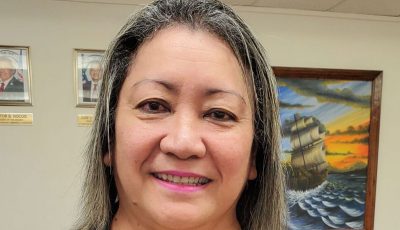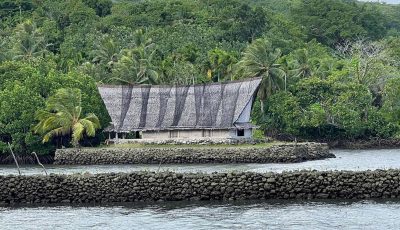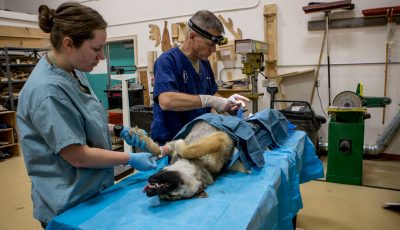Removal of Tanapag tanks may start around May
Preliminary plans for the upcoming removal of the remaining aboveground oil storage tanks in the former Tanapag Fuel Farm was discussed in a recent public hearing held by the U.S. Army Corps of Engineers.
According to USACE-Honolulu District senior program and project manager Helene Takemoto, their goal was to get the concerns of the public regarding their move to go in and remove the tanks.
“What we wanted to do is to get some of the community’s concerns before we get to the plan because usually, it’s too late to [get the concerns] after. So we wanted to get their concerns incorporated,” Takemoto said in an interview.
She added that the actual plan on how the tanks will be removed is being developed and that they will come back once they get it.
During the public meeting held at Tanapag Middle School last Thursday night, USACE said there are four zones that need to be addressed namely Zone A in Sadog Tasi which has four tank sites where in one tank is still intact, and Zones B to D in Tanapag which have a total of 13 tank sites.
Takemoto noted that most of the sites don’t have the tanks anymore but still has the concrete pads where the tanks used to sit as well as the burms around them.
USACE estimates the work in Zone A to be completed in one and half months, Zones B and C in one month and Zone D in two months. These will be done simultaneously.
Concerns of health risks were raised during the public meeting. However, Takemoto said that there is no risk to human health based on the preliminary assessments.
“Right now, preliminarily, there is no human health risk based on the samples,” Takemoto said.
“This is a removal action. We have another project that’s taking care of the soil contamination which should be finalized pretty shortly,” she added.
Takemoto said most of the sites don’t have any kind of contamination but another test is being conducted to confirm within the foot print of the tank whether there is still contamination or not.
“Within the footprint, we want to verify that we meet the clean up goals that we set up with [Bureau of Environmental and Coastal Quality] then we can tell you that the site will be cleared,” Takemoto said, “There are two projects that go hand in hand. Some of the unknown data is where the tanks actually sit.”
With regards to concerns about the lead content of the paint used in T-37, Takemoto said it doesn’t leach.
“There is a test to determine the lead and if it leaches, then it’s a problem. As far as I know, when we ran the test many years ago, it doesn’t leach to the environment. That was taken into consideration when we did the human health risk too so it appears that we don’t have a human health risk based on the paint and everything else,” Takemoto said.
According to BECQ-Division of Environmental Quality director Ray Masga, they will make sure that the removal of the tanks will follow provisions and guidelines.
Although the project is under the U.S. Environmental Protection Agency’s Comprehensive Environmental Response, Compensation, and Liability Act which does not require them to obtain a permit, BECQ still has the local oversight for the project.
Just this month, a bird survey has been initiated in the areas where the removal will take place.
Takemoto said the survey will last until March for them to see where the birds are and avoid them especially if they are nesting.
She added that the actual work on the tank sites will probably start in May, “give or take a month or two.”
USACE will come back to hold another public meeting prior to the work to then discuss the details of the plan.
The Tanapag Fuel Farm was built in the mid- to late 1940s and was used by the U.S. Navy to provide fuel for ships and aircraft during World War II and through the 1950s, after which up to 42 tanks were abandoned.
In 2006, six tanks were removed from the same site by BECQ and the U.S. EPA. These tanks were prioritized as there was remaining oil in them and were also adjacent to homes.
Representatives of the U.S. Army Corps of Engineers held a public meeting on their upcoming plan to remove the remaining fuel tanks used in the old Tanapag Fuel Farm. Concerns on human health were among the risks discussed during the meeting.



























